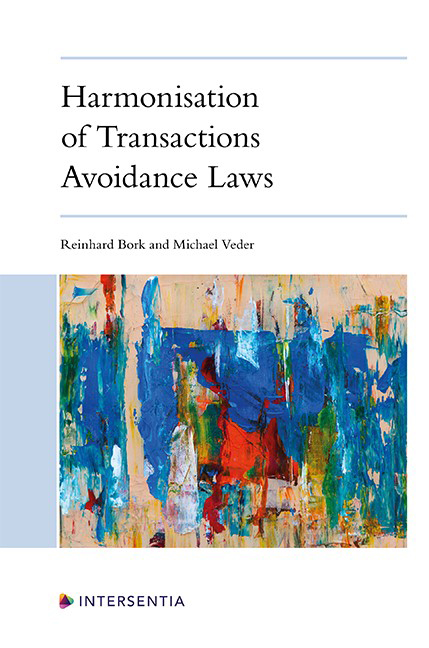Sweden
Published online by Cambridge University Press: 26 May 2022
Summary
PART 1. DETAILS OF YOUR NATIONAL TRANSACTIONS AVOIDANCE LAW
I. SYSTEM
Question 1. Is your transactions avoidance law (for terminology cf. Introduction at C.) part of insolvency law or is it in parts or as a whole incorporated in other fields of law (e.g. general civil law, commercial law, company law)?
Swedish transaction avoidance law is entirely incorporated in chapter 4 of the Bankruptcy Act (SFS 1987: 672). Chapter 4 applies in bankruptcies (insolvent liquidations) and in company reorganisations under the Company Reorganisation Act (SFS 1996:764). References to transaction avoidance provisions below are to the Bankruptcy Act, if not otherwise stated.
Question 2. Are the rules on transactions avoidance law in your jurisdiction the same for entrepreneurs/legal entities and consumers/natural persons? If not, please explain the differences and take it into account when completing this questionnaire.
Yes, the rules on transactions avoidance law are the same for entrepreneurs/legal entities and consumers/natural persons.
Question 3. Are the rules on transactions avoidance law in your jurisdiction the same for liquidation and restructuring proceedings (if any)? If not, please explain the differences and take it into account when completing this questionnaire.
Yes, in substance. There are some differences when it comes to procedural regulation. The main difference is that the claimant in a transaction avoidance proceeding is normally the bankruptcy estate, but the claimant in a restructuring (company reorganisation) proceeding is the administrator. A creditor entitled to vote in the company reorganisation can also bring a claim for avoidance. In practice, no transaction avoidance proceedings are commenced in restructuring proceedings. One reason is probably that the administrator must bear the legal costs of the opponent if the claim for avoidance is rejected. If there are grounds for avoidance of a transaction regarding a significant value, the restructuring proceeding is normally terminated and the debtor is declared bankrupt after application from the debtor or a creditor. Thereafter the bankruptcy estate commences a transaction avoidance proceeding.
Question 4. Are the rules on transactions avoidance law in your jurisdiction the same for debtor-in-possession proceedings (if any)? If not, please explain the differences and take it into account when completing this questionnaire.
Yes, in substance, see answer to Question 3 above. A restructuring proceeding under the Company Reorganisation Act is a debtor-in-possession proceeding.
- Type
- Chapter
- Information
- Harmonisation of Transactions Avoidance Laws , pp. 1257 - 1282Publisher: IntersentiaPrint publication year: 2022



